高中英语必修二Unit2课文 Reading
- 格式:ppt
- 大小:1.31 MB
- 文档页数:30
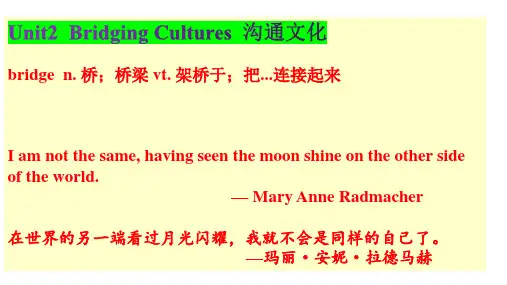
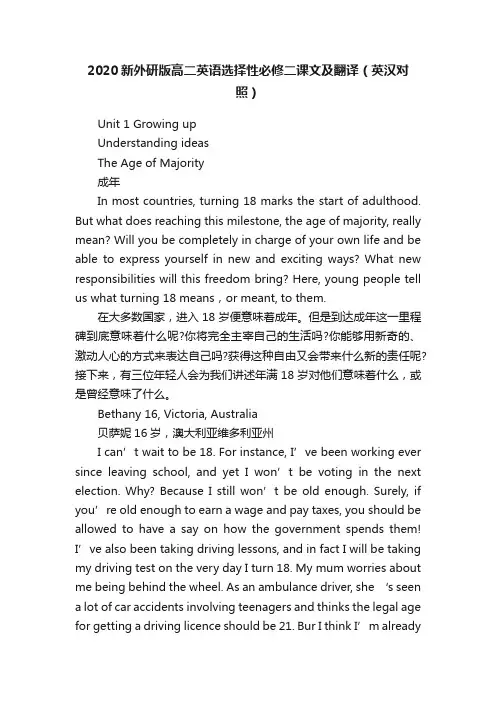
2020新外研版高二英语选择性必修二课文及翻译(英汉对照)Unit 1 Growing upUnderstanding ideasThe Age of Majority成年In most countries, turning 18 marks the start of adulthood. But what does reaching this milestone, the age of majority, really mean? Will you be completely in charge of your own life and be able to express yourself in new and exciting ways? What new responsibilities will this freedom bring? Here, young people tell us what turning 18 means,or meant, to them.在大多数国家,进入18岁便意味着成年。
但是到达成年这一里程碑到底意味着什么呢?你将完全主宰自己的生活吗?你能够用新奇的、激动人心的方式来表达自己吗?获得这种自由又会带来什么新的责任呢?接下来,有三位年轻人会为我们讲述年满18岁对他们意味着什么,或是曾经意味了什么。
Bethany 16, Victoria, Australia贝萨妮16岁,澳大利亚维多利亚州I can’t wait to be 18. For instance, I’ve been working eve r since leaving school, and yet I won’t be voting in the next election. Why? Because I still won’t be old enough. Surely, if you’re old enough to earn a wage and pay taxes, you should be allowed to have a say on how the government spends them! I’ve also be en taking driving lessons, and in fact I will be taking my driving test on the very day I turn 18. My mum worries about me being behind the wheel. As an ambulance driver, she ‘s seen a lot of car accidents involving teenagers and thinks the legal age for g etting a driving licence should be 21. Bur I think I’m alreadymature enough to understand that driving a car also means taking responsibility for my life and the lives of other people.我简直等不及想要到18岁了。
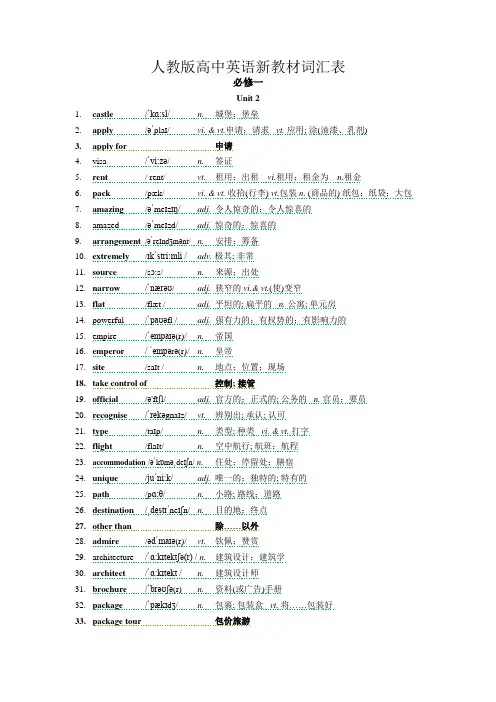
人教版高中英语新教材词汇表必修一Unit 21.castle/ˈkɑ:sl/n.城堡;堡垒2.apply/əˈplaɪ/ vi. & vt.申请;请求vt. 应用; 涂(油漆、乳剂)3.apply for 申请4.visa /ˈvi:zə/ n. 签证5.rent / rent/vt. 租用;出租 vi.租用;租金为 n.租金6.pack/pæk/ vi. & vt.收拾(行李) vt.包装n. (商品的) 纸包;纸袋;大包7.amazing/əˈmeɪzɪŋ/adj. 令人惊奇的;令人惊喜的8.amazed /əˈmeɪzd/adj. 惊奇的;惊喜的9.arrangement/əˈreɪndʒmənt/n.安排;筹备10.extremely/ɪkˈstri:mli /adv.极其; 非常11.source/sɔ:s/ n. 来源;出处12.narrow/ˈnærəʊ/ adj. 狭窄的 vi.& vt.(使)变窄13.flat/flæt / adj. 平坦的; 扁平的n.公寓; 单元房14.powerful /ˈpaʊəfl /adj.强有力的;有权势的;有影响力的15.empire /ˈempaɪə(r)/n.帝国16.emperor / ˈempərə(r)/ n. 皇帝17.site/saɪt / n. 地点;位置;现场18.take control of 控制; 接管19.official/ə'fɪʃl/ adj. 官方的;正式的; 公务的n. 官员;要员20.recognise/ˈrekəgnaɪz/ vt.辨别出; 承认; 认可21.type/taɪp/ n. 类型; 种类vi. & vt. 打字22.flight /flaɪt/ n. 空中航行; 航班;航程23.accommodation /əˈkɒməˌdeɪʃn/n. 住处;停留处;膳宿24.unique/juˈni:k/adj.唯一的;独特的; 特有的25.path /pɑ:θ/n.小路; 路线;道路26.destination/ˌdestɪˈneɪʃn/ n.目的地;终点27.other than 除……以外28.admire/ədˈmaɪə(r)/ vt.钦佩;赞赏29.architecture /ˈɑ:kɪtektʃə(r) /n.建筑设计;建筑学30.architect/ˈɑ:kɪtekt /n.建筑设计师31.brochure/ˈbrəʊʃə(r) n.资料(或广告)手册32.package/ˈpækɪdʒ/ n.包裹; 包装盒vt.将……包装好33.package tour 包价旅游34.contact/ˈkɒntækt / vt. 联络;联系n.联系;接触35.civilisation/ˌsɪvəlaɪˈzeɪʃn/ n. ( NAmE -ization) 文明;闻名世界36.make up 构成;形成37.soldier/ˈsəʊldʒə(r)/ n. 士兵; 军人38.transport/ ˈtrænspɔ:t/ n.(NAmE usually transportation)交通运输系统vt.运输;运送39.hike / haɪk / vi.徒步旅行 vt.去…远足 n.远足; 徒步旅行40.economy /ɪˈkɒnəmi/ n.经济; 节约41.economic/ˌi:kəˈnɒmɪk/ adj.经济(上)的; 经济学的42.credit /ˈkredɪt/ n. 借款;信用; 称赞; 学分43.credit card 信用卡44.detail/ˈdi:teɪl / n.细节;详情;细微之处45.check in (在旅馆、机场等) 登记46.check out 结账离开(旅馆等)47.request /rɪˈkwest/n. (正式或礼貌的)要求;请求 vt.(正式或礼貌地)要求;请求48.view/ vju:/ n.视野;景色;看法49.sight/saɪt/ n.景象; 视野; 视力50.statue /ˈstætʃu:/ n. 雕塑;雕像51.BCE/ˌbi: si: ˈi:/(=before the Common Era) 公元前52.tomb / tu:m / n. 坟墓53.unearth / ʌnˈɜ:θ/vt.挖掘;发掘ment/ˈkɒment/ n. 议论;评论vi.& vt.发表意见;评论人教版高中英语新教材课文必修一Unit 2Reading and thinkingBelow are two texts about Peru. Look through them quickly. What types of text are they: encyclopedia or brochure?PERU is a country on the Pacific coast of South America with three main areas: narrow, dry, flat land running along the coast, the Andes Mountains, and the Amazon rainforest.秘鲁是位于南美洲太平洋沿岸的一个国家,由三个主要地区构成:狭窄的、干燥的、平坦的沿海地区,安第斯山脉和亚马孙热带雨林。
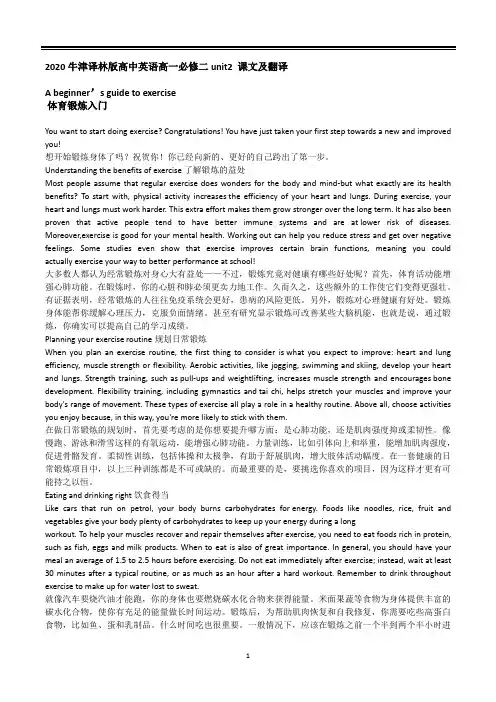
2020牛津译林版高中英语高一必修二unit2 课文及翻译A beginner’s guide to exercise体育锻炼入门You want to start doing exercise? Congratulations! You have just taken your first step towards a new and improved you!想开始锻炼身体了吗?祝贺你!你已经向新的、更好的自己跨出了第一步。
Understanding the benefits of exercise了解锻炼的益处Most people assume that regular exercise does wonders for the body and mind-but what exactly are its health benefits? To start with, physical activity increases the efficiency of your heart and lungs. During exercise, your heart and lungs must work harder. This extra effort makes them grow stronger over the long term. It has also been proven that active people tend to have better immune systems and are at lower risk of diseases. Moreover,exercise is good for your mental health. Working out can help you reduce stress and get over negative feelings. Some studies even show that exercise improves certain brain functions, meaning you could actually exercise your way to better performance at school!大多数人都认为经常锻炼对身心大有益处——不过,锻炼究竟对健康有哪些好处呢?首先,体育活动能增强心肺功能。
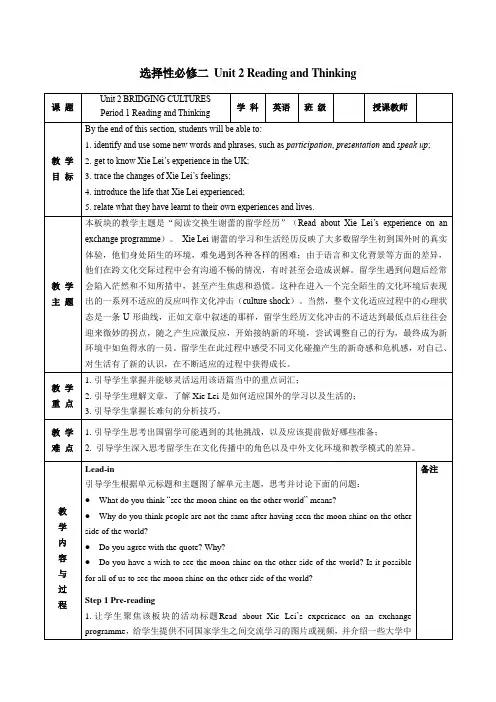
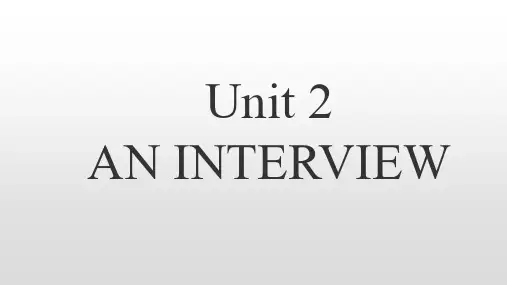
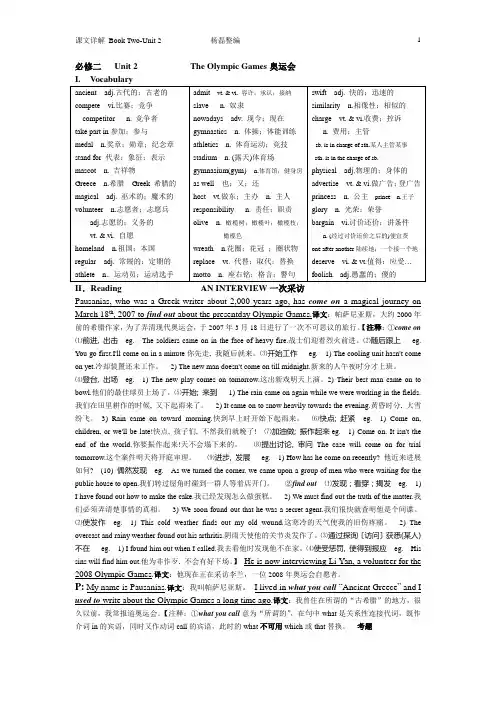
必修二Unit 2 The Olympic Games奥运会I.Vocabularyancient adj.古代的;古老的compete vi.比赛;竞争competitor n. 竞争者take part in参加;参与medal n.奖章;勋章;纪念章stand for 代表;象征;表示mascot n. 吉祥物Greece n.希腊Greek 希腊的magical adj. 巫术的;魔术的volunteer n.志愿者;志愿兵adj.志愿的;义务的vt. & vi. 自愿homeland n.祖国;本国regular adj. 常规的;定期的athlete n.. 运动员;运动选手admit vt. & vi. 容许;承认;接纳slave n. 奴隶nowadays adv. 现今;现在gymnastics n. 体操;体能训练athletics n. 体育运动;竞技stadium n. (露天)体育场gymnasium(gym) n.体育馆;健身房as well 也;又;还host vt.做东;主办n. 主人responsibility n. 责任;职责olive n. 橄榄树;橄榄叶;橄榄枝;橄榄色wreath n.花圈;花冠;圈状物replace vt. 代替;取代;替换motto n. 座右铭;格言;警句swift adj. 快的;迅速的similarity n.相像性;相似的charge vt. & vi.收费;控诉n. 费用;主管sb. is in charge of sth.某人主管某事sth. is in the charge of sb.physical adj.物理的;身体的advertise vt. & vi.做广告;登广告princess n. 公主prince n.王子glory n. 光荣;荣誉bargain vi.讨价还价;讲条件n. (经过讨价还价之后的)便宜货one after another陆续地;一个接一个地deserve vi. & vt.值得;应受…foolish adj.愚蠢的;傻的II.Reading AN INTERVIEW一次采访Pausanias, who was a Greek writer about 2,000 years ago, has come on a magical journey on March 18th, 2007 to find out about the presentday Olympic Games.译文:帕萨尼亚斯,大约2000年前的希腊作家,为了弄清现代奥运会,于2007年3月18日进行了一次不可思议的旅行。
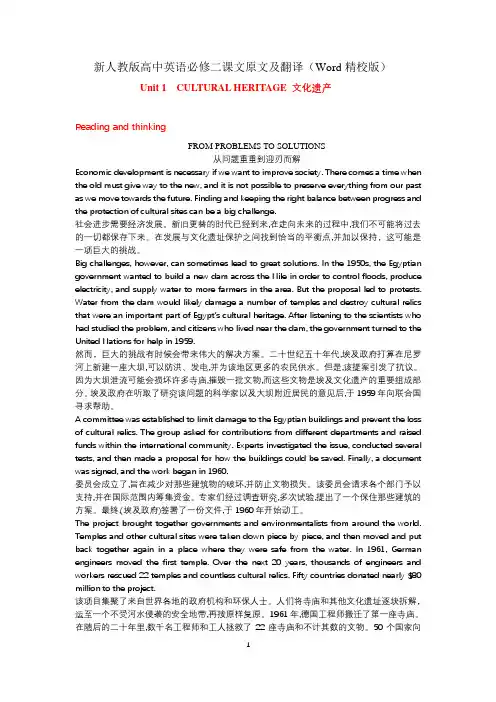
新人教版高中英语必修二课文原文及翻译(Word精校版)Unit 1 CULTURAL HERITAGE 文化遗产Reading and thinkingFROM PROBLEMS TO SOLUTIONS从问题重重到迎刃而解Economic development is necessary if we want to improve society. There comes a time when the old must give way to the new, and it is not possible to preserve everything from our past as we move towards the future. Finding and keeping the right balance between progress and the protection of cultural sites can be a big challenge.社会进步需要经济发展。
新旧更替的时代已经到来,在走向未来的过程中,我们不可能将过去的一切都保存下来。
在发展与文化遗址保护之间找到恰当的平衡点,并加以保持,这可能是一项巨大的挑战。
Big challenges, however, can sometimes lead to great solutions. In the 1950s, the Egyptian government wanted to build a new dam across the Nile in order to control floods, produce electricity, and supply water to more farmers in the area. But the proposal led to protests. Water from the dam would likely damage a number of temples and destroy cultural relics that were an important part of Egypt’s cultural heritage. Af ter listening to the scientists who had studied the problem, and citizens who lived near the dam, the government turned to the United Nations for help in 1959.然而,巨大的挑战有时候会带来伟大的解决方案。
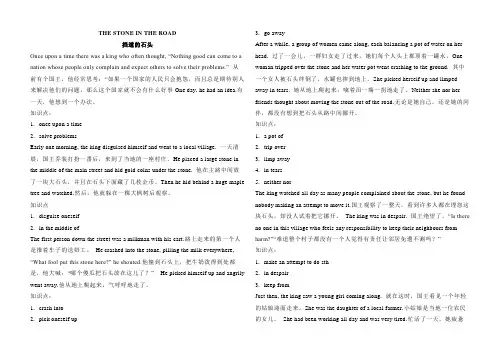
THE STONE IN THE ROAD挡道的石头Once upon a time there was a king who often thought, “Nothing good can come to a nation whose people only complain and expect others to solve their problems.” 从前有个国王,他经常思考:“如果一个国家的人民只会抱怨,而且总是期待别人来解决他们的问题,那么这个国家就不会有什么好事One day, he had an idea.有一天,他想到一个办法。
知识点:1.once upon a time2.solve problemsEarly one morning, the king disguised himself and went to a local village. 一天清晨,国王乔装打扮一番后,来到了当地的一座村庄。
He placed a large stone in the middle of the main street and hid gold coins under the stone. 他在主路中间放了一块大石头,并且在石头下面藏了几枚金币。
Then he hid behind a huge maple tree and watched.然后,他就躲在一棵大枫树后观察。
知识点1.disguise oneself2.in the middle ofThe first person down the street was a milkman with his cart.路上走来的第一个人是推着车子的送奶工。
He crashed into the stone, pilling the milk everywhere, “What fool put this stone here?” he shouted.他撞到石头上,把牛奶泼得到处都是,他大喊:“哪个傻瓜把石头放在这儿了?” He picked himself up and angrily went away.他从地上爬起来,气呼呼地走了。

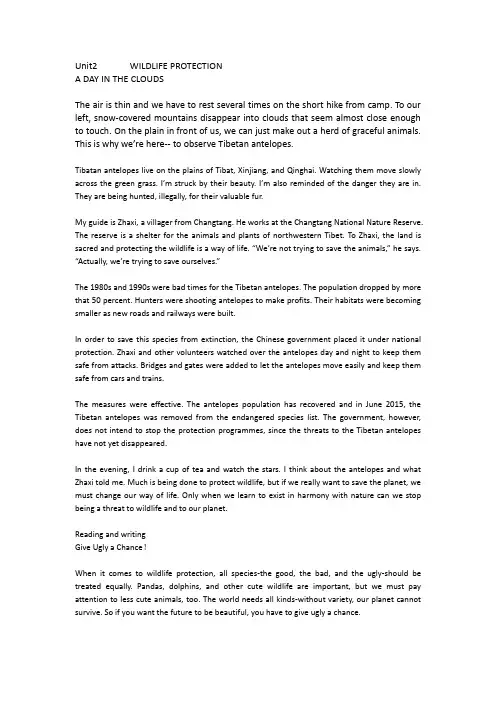
Unit2 WILDLIFE PROTECTIONA DAY IN THE CLOUDSThe air is thin and we have to rest several times on the short hike from camp. To our left, snow-covered mountains disappear into clouds that seem almost close enough to touch. On the plain in front of us, we can just make out a herd of graceful animals. This is why we’re here-- to observe Tibetan antelopes.Tibatan antelopes live on the plains of Tibat, Xinjiang, and Qinghai. Watching them move slowly across the green grass. I’m struck by their beauty. I’m also reminded of the danger they are in. They are being hunted, illegally, for their valuable fur.My guide is Zhaxi, a villager from Changtang. He works at the Changtang National Nature Reserve. The reserve is a shelter for the animals and plants of northwestern Tibet. To Zhaxi, the land is sacred and protecting the wildlife is a way of life. “We’re not trying to save the animals,” he says. “Actually, we’re trying to save ourselves.”The 1980s and 1990s were bad times for the Tibetan antelopes. The population dropped by more that 50 percent. Hunters were shooting antelopes to make profits. Their habitats were becoming smaller as new roads and railways were built.In order to save this species from extinction, the Chinese government placed it under national protection. Zhaxi and other volunteers watched over the antelopes day and night to keep them safe from attacks. Bridges and gates were added to let the antelopes move easily and keep them safe from cars and trains.The measures were effective. The antelopes population has recovered and in June 2015, the Tibetan antelopes was removed from the endangered species list. The government, however, does not intend to stop the protection programmes, since the threats to the Tibetan antelopes have not yet disappeared.In the evening, I drink a cup of tea and watch the stars. I think about the antelopes and what Zhaxi told me. Much is being done to protect wildlife, but if we really want to save the planet, we must change our way of life. Only when we learn to exist in harmony with nature can we stop being a threat to wildlife and to our planet.Reading and writingGive Ugly a Chance!When it comes to wildlife protection, all species-the good, the bad, and the ugly-should be treated equally. Pandas, dolphins, and other cute wildlife are important, but we must pay attention to less cute animals, too. The world needs all kinds-without variety, our planet cannot survive. So if you want the future to be beautiful, you have to give ugly a chance.Don’t Make Paper with My Home!Billions of trees are being cut down every year to make paper for humans. Every tree that is cut down is a part of the habitat of animals such as these koalas. In this way a lot of animal homes are being destroyed! Is it right to make animals homeless so that humans can have more paper?。
新人教版高中英语必修二课文原文及翻译(Word精校版)Unit 1 CULTURAL HERITAGE 文化遗产Reading and thinkingFROM PROBLEMS TO SOLUTIONS从问题重重到迎刃而解Economic development is necessary if we want to improve society.There comes a time when the old must give way to the new, and it is not possible to preserve everything from our past as we move towards the future.Finding and keeping the right balance between progress and the protection of cultural sites can be a big challenge.社会进步需要经济发展。
新旧更替的时代已经到来,在走向未来的过程中,我们不可能将过去的一切都保存下来。
在发展与文化遗址保护之间找到恰当的平衡点,并加以保持, 这可能是一项巨大的挑战。
Big challenges, however, can sometimes lead to great solutions.In the 1950s, the Egyptian government wanted to build a new dam across the Nile in order to control floods, produce electricity, and supply water to more farmers in the area.But the proposal led to protests.Water from the dam would likely damage a number of temples and destroy cultural relics that were an important part of Egypt’s cultural heritage.After listening to the scientists who had studied the problem, and citizens who lived near the dam, the government turned to the United Nations for help in 1959.然而, 巨大的挑战有时候会带来伟大的解决方案。
人教版高中英语必修二第二单元课文Unit 2 The Olympic GamesPart 1 Pre-readingThe first modern Olympic Games were held in 1896 in Athens, Greece. The idea of reviving the ancient Olympic Games came from a Frenchman named Pierre de Coubertin. He believed that sports could help promote peace and understanding among nations. The ancient Olympic Games were held in Olympia, Greece, every four years from 776 BC to 393 AD. Athletes competed in various events, including running, wrestling, and chariot racing. The Games were an important part of ancient Greek culture and the winners were highly respected.Part 2 ReadingPart 1 (Para. 1-2)In the first part of the text, it introduces the history of the ancient Olympic Games. The Games were held in honor of the Greek gods and were considered a religious festival. It mentions that the Games began in 776 BC and continued every four years until 393 AD when they were banned by the Emperor Theodosius I. During the Games, wars and conflicts were stopped to allow athletes and spectators to travel safely. The table is given below shows the events and winners of some ancient Olympic Games.Year/ Events/ WinnersAncient Olympic Games776 BC/ One event: men's stade race/ CoroebusPart 2 (Para. 3-7)The second part of the text is about the revival of the Olympic Games in 1896. It introduces Pierre de Coubertin, the founder of the modern Olympic Games. Coubertin believed that sports couldhelp to promote peace and understanding among nations. He worked hard to convince people that reviving the ancient Olympic Games was important. Finally, in 1896, the first modern Olympic Games were held in Athens, Greece. The event included a marathon race, which was inspired by the story of the Greek messenger Pheidippides. The winners of the first modern Olympic Games were listed as follows:Event / WinnerMen's marathon/ Spiros LouisMen's singles tennis/ John Pius BolandMen's cycling race/ Aristides KonstantinidisPart 3 (Para. 8-11)The third part of the text discusses the modern Olympic Games and how they have changed over the years. It mentions that the modern Olympic Games were not held during both World Wars and were boycotted by some countries in the past. The first Olympic Winter Games were held in 1924 in Chamonix, France. Women were allowed to compete in the Olympics for the first time in 1900. Now, the Olympic Games are held every four years and athletes from all over the world compete in various sports. The text also mentions the controversies surrounding the Olympic Games, such as doping scandals and the use of professional athletes.Part 3 Post-readingAfter reading the text, we can understand the history of the Olympic Games, including both the ancient and modern Olympic Games. We also learn about the significance of the Games in promoting peace and understanding among nations. Furthermore, we become aware of the changes and controversies that haveoccurred throughout the history of the Olympic Games. The Olympic Games have not only become a global sporting event but also a symbol of unity and friendly competition among nations. By participating in the Olympic Games, athletes have the opportunity to showcase their talents and represent their countries on an international stage. The Olympic Games continue to bring people together from different backgrounds and cultures, promoting a spirit of cooperation and mutual respect.。